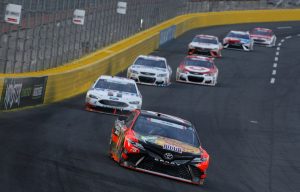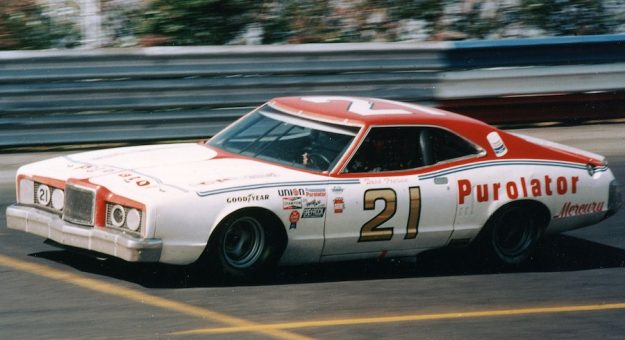“You pretty much had to sit down, strap in and shut up,” Elliott said. “There was little else you could do in those cars. You got into little rituals that you did as you became educated but still, you really didn’t know any better. That was especially true in those days.
“I worked on the car all morning. I drove the car, however, far it would go, whether it was 600 miles or not,” Elliott added. “Back then, most cars broke the last 100 miles of the 600. I never looked at the scoreboard at Charlotte. I knew not to do that. I did that at Dover once and I felt like I had been driving for a couple of days. I had only run 150 laps (out of 500). I said I would never do that again and I didn’t.”
Even with today’s computerized Next Gen cars and a strong emphasis on fitness, drivers are still challenged by the 600 miles they must endure each May at Charlotte Motor Speedway.
Kyle Busch, driver of the No. 8 Richard Childress Racing Chevrolet, has 61 Cup Series victories, including the 2018 Coca-Cola 600. Busch remembers the days of tough drivers giving it their all in rather spartan race cars.

“You are kind of going based off of the man versus machine of that era,” Busch said. “I would say that parts and pieces of the cars were a lot different back then, so you kind of had to drive them differently; taking care of your equipment, not using up your stuff and whatnot.
“The cars now are just about bulletproof … just run them as hard as you can all race long, all the time, and that wears on a driver, for sure,” Busch continued. “Just being on top of it every single lap and giving it everything all the time. So yeah, it’s definitely physically demanding. I’ve had Coca-Cola 600s where after the race is over, I’m fine. I’m good. I have no issue.
“And then I’ve had Coca-Cola 600s where I looked up at the scoreboard, it was mile marker 500 and I was like, ‘OK, we should be done and I’m like damn we still have 100 more to go, this is going to be a night.’ So I think it kind of depends on your routine, your workout, that sort of stuff. I’ve also had more superspeedway races where I felt more mental fatigue, just with all the decision-making processes that you have to think through, where the Coca-Cola 600 I don’t think is too terrible for me.”
The most dominant performance in the race’s 63-year history came on May 29, 2016, when Martin Truex Jr. led 392 of 400 laps while driving for team owner Barney Visser and Furniture Row Racing.
“The 600 is always a challenge,” Truex said. “Even when we dominated that race and led all those laps that year, it was still a handful because we were on edge. You know track position is important and you can’t make any mistakes. We did everything right that night. The pit crew was awesome and did all the things that it takes to win a race that long and missed all the opportunities to make mistakes.
“The track changes a lot during the race as well,” he continued. “Obviously, it’s going to be hard to duplicate that race but it’s a long race for sure. You feel that race a lot more than other races when you’re done.”
This story appeared in the May 17, 2023 edition of the SPEED SPORT Insider.

